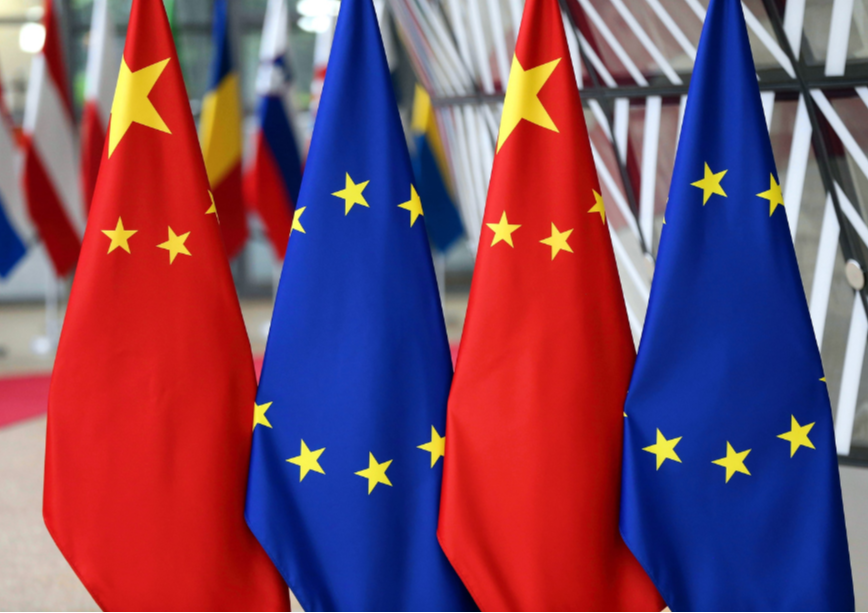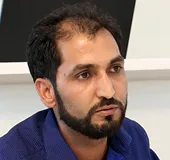-
CENTRES
Progammes & Centres
Location
The EU must capitalise on TITR’s development to assert its position as a dominant geoeconomic power in the region and curb China’s influence.

China's strategic alignment of the Trans-Caspian International Transport Corridor (TITR)—also called the Middle Corridor—with its ambitious transcontinental Belt and Road Initiative (BRI) is now focused around Azerbaijan, a country of pivotal importance at the crossroads where the East meets the West. The TITR is a European Union (EU) and United States (US)-endorsed multimodal transport route that mirrors the ancient Silk Road, spanning Central Asia, the Caspian Sea, and the Caucasus. Its momentum surged after the Russia-Ukraine war, driven by the need for reliable connectivity between the EU and Central Asia. Beijing aims to strengthen its BRI pivot by enhancing economic ties with Azerbaijan, a crucial country along the TITR. Chinese scholars and government officials actively engage with Azerbaijan to create synergy between the two connectivity projects.
Strategically located on the Caspian Sea, Azerbaijan’s significance as a crucial point for connectivity routes and pipelines between Central Asia and Europe has increased manifold following the sanctions on Iran and Russia. During an official visit to China in 2015, President Ilham Aliyev signed a memorandum of understanding (MoU) to promote the BRI and identify priorities for economic and trade relations between the two nations. However, Beijing had mixed feelings about the TITR as it threatened the competitiveness of Russia's northern route to Europe. Unwilling to strain its relationship with Moscow, Beijing invested little in Azerbaijan and TITR. By 2017, it implemented only five BRI projects valuing US$ 54 million in Azerbaijan. Chinese companies invested US$ 800 million in Azerbaijan, especially in oil and telecommunications, while Baku invested more than US$ 1,700 million in China. Some participating TITR countries also expressed reservations about joint projects with Beijing, citing BRI's limited success and China's doubtful intentions.
Strategically located on the Caspian Sea, Azerbaijan’s significance as a crucial point for connectivity routes and pipelines between Central Asia and Europe has increased manifold following the sanctions on Iran and Russia.
Subsequently, Azerbaijan financed most of its projects, upgrading its infrastructure with modernised facilities such as the Baku-Tbilisi-Kars railway line between Türkiye and Azerbaijan via Georgia, the new Caspian seaport, and a free trade facility in Atal. In 2017, the 826 km-long Baku-Tbilisi-Kars railway line opened, and Baku invested US$ 1.6 billion in 4,286 km of rail track, 60 percent of which is electrified and around 40 percent is a double-track line. These railways connect to the new Caspian seaport at Baku, facilitating connectivity between Europe and Asia.
Due to the Russia-Ukraine conflict and subsequent sanctions imposed by the US and EU on Moscow, the northern corridor became inoperable, making European transport operators and shippers seek other options. Additionally, the Russian invasion of Ukraine raised concerns among Central Asian countries about their sovereignty, and they view the TITR as a means of reducing their dependence on Russia while curbing excessive reliance on China.
The TITR, which spans over 4,500 km of rail lines and 500 km of seaways, is 2,000 km shorter than the Russian northern corridor, making it the preferred choice for transportation. Container traffic along the TITR has increased by 33 percent in 2022 than 2021. The EU is keen on improving TITR to support its geostrategic and geoeconomic interests as it seeks to diversify its energy sources. While gas purchases from the Caspian Sea via the Southern Gas Corridor are insufficient to replace Russian supplies, the EU views it as a strategic option. Turkmenistan has officially declared its intention to boost gas purchases to Europe through the Caspian region, via the Trans Caspian Pipeline (TCP). Moscow's control over the EU’s natural gas market is expected to decline significantly. In the third quarter of 2021, Europe imported 39 percent of its gas from Russia, reducing to just 12 percent in the third quarter of 2023.
The EU and Central Asia’s leadership initiated talks with each other for geostrategic and geoeconomic reasons. The president of the EU Council held high-level talks with leaders from Central Asia to discuss Europe’s more significant involvement in the TITR. In 2022, the first EU-Central Asia Summit reaffirmed its commitment to building a robust and progressive partnership based on mutual interests and shared values. During the second Summit in 2023, the leaders demonstrated a willingness to enhance cooperation within the Central Asian region and between Europe and Central Asia. They aimed to strengthen energy security by developing alternative energy supply routes and improving connectivity. The increased number of high-level visits from EU leaders and prime ministers of EU countries also endorsed these summits.
During the second Summit in 2023, the leaders demonstrated a willingness to enhance cooperation within the Central Asian region and between Europe and Central Asia. They aimed to strengthen energy security by developing alternative energy supply routes and improving connectivity.
The BRI was launched in 2013 with much hype by China as a foreign policy tool. The Chinese saw it as an opportunity to ‘move out’ its overcapacity based on its “development strategy abroad and foreign policy”. However, EU officials argue that BRI lacks transparency and has forced poor countries in Asia and Africa into unsustainable debt. They are also wary of the potential risks, such as authoritarian alliances on security, surveillance, and repression. These risks have led Brussels to take a stance against China's BRI. Italy, the EU country that endorsed BRI, withdrew from this project in December 2023.
The BRI was launched in 2013 with much hype by China as a foreign policy tool. The Chinese saw it as an opportunity to ‘move out’ its overcapacity based on its “development strategy abroad and foreign policy”.
Following the COVID-19-related supply chain disruptions and increased geopolitical tensions, the EU has launched the Global Gateway plan, aiming to invest US$ 330 billion globally by 2027 in research and education, digitisation, infrastructure, health, and climate and energy. Under this plan, in March 2024, the EU pledged investments worth US$ 11 billion to upgrade sustainable infrastructure along the TITR and Central Asia, fully supported by international financial institutions. Subsequently, the US promised to use the G7 Partnership for Global Infrastructure and Investment to support TITR development. The TITR has the potential to aid the US and the EU in managing the global competition with China, Russia, and Iran.
China’s economic slowdown, corruption, debt stress, and failing infrastructure projects have forced Beijing to cut spending on its ambitious BRI. China is now attempting to gain influence over the TITR to establish its position in the new geostrategic and geoeconomic game with the EU, especially in the era of growing decoupling and increasing geopolitical contestations. TITR will allow the EU to become a significant regional geoeconomic power, especially in Central Asia, to checkmate both China and Russia. The EU must capitalise on TITR’s development to assert its position as a dominant geoeconomic power in the region and cement its ties with the South Caucasus. This strategic move will effectively challenge and curb China's growing influence in the area.
Ayjaz Wani is a Fellow at the Observer Research Foundation.
The views expressed above belong to the author(s). ORF research and analyses now available on Telegram! Click here to access our curated content — blogs, longforms and interviews.

Ayjaz Wani (Phd) is a Fellow in the Strategic Studies Programme at ORF. Based out of Mumbai, he tracks China’s relations with Central Asia, Pakistan and ...
Read More +